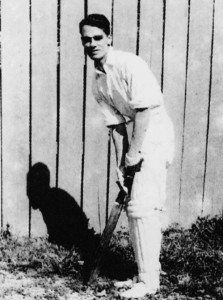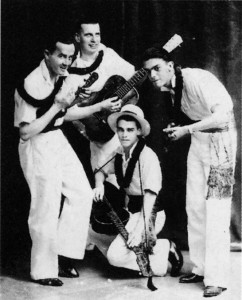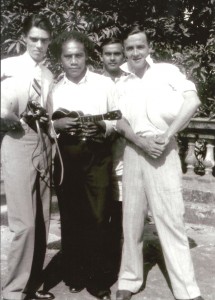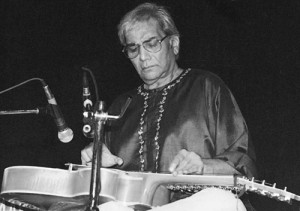Garney Nyss was a man of varied talents. He played first division cricket in Bengal for many years. The hockey legend Dhyan Chand was so in awe of his prowess with the stick, he once exclaimed, “What kind of player are you, Nyss? Have you dropped from heaven?” He was such an insightful ornithologist, Salim Ali wanted to co-author a book with him. He was an excellent photographer, and his book Memories is a well-observed record of the India of the 1940s. But between representing his state in hockey for 18 years and making documentary films on Himalayan birds and Mother Teresa, Nyss and his band, the Aloha Boys, made approximately 60 sides of Hawaiian music for HMV in the 1940s.

Nyss was the star student of the Hawaiian guitar master Tau Moe, who came to Calcutta in 1929 and left a legacy that eventually led to an Indian musician winning a Grammy award six decades later. Last week, I wrote about the Tau Moe family’s adventures in India and about how his cousin Tauivi Moe ended up marrying an Anglo-Indian woman, Bridget Ensell. Garney Nyss took lessons from both Tau Moe and his cousin, Tauivi.
Bob Brozman, an American researcher and guitarist who worked with Tau Moe from 1986 until his death in 2004, met Nyss in Calcutta in 1998. He was impressed by his generosity and talent. Nyss was a “wonderful man, full of music, [and] could play well even up to the end of his life”, Brozman told me an email message. Nyss gave the American a photo of Tau Moe and his troupe from 1929 that had never been published. The Aloha Boys played in “a very authentic Hawaiian style”, Brozman said. That’s apparent from this recording of Birth of the Blues.
Despite his competing passions, Nyss always found the time to teach music (he was an instructor at the Calcutta School of Music until shortly before he passed away in 1998). His students began to use the Hawaiian guitar to perform Rabindrasangeet and the instrument also found its way into the Hindi film industry. In addition, the slide techniques used by Hawaiian guitar players gave Indian musicians new ideas about how Hindustani classical music could be played on the guitar.
Among the Hindustani musicians who was prompted to rethink his approach to his instrument was Brij Bhushan Kabra, a young many from Jodhpur, who heard the Hawaiian guitar on a holiday to Calcutta in the 1950s. “The instrument sounded clean and melodious, and I wanted to learn it,” he told one interviewer. He modified his instrument, retuning some strings. Call of the Valley, the album he made in 1967 in collaboration with flautist Hari Prasad Chaurasia and santoor player Shiv Kumar Sharma, is the largest-selling Hindustani classical recording ever.
Kabra’s approach, in turn, left a mark on Vishwa Mohan Bhatt, who won a Grammy in 1994 with Ry Cooder for their album, Meeting By the River. He has modified his instrument too. The maestro’s site says that he has “attracted international attention by his successful Indianisation of the western Hawaiian guitar with his perfect assimilation of sitar, sarod and veena techniques, by giving it a evolutionary design and shape and by adding 14 more strings”.
There’s something satisfyingly circular to the story of the Hawaiian guitar in India. Even as Indians have found a way to make the slide guitar our own, some Hawaiians maintain that they were actually taught how to use slides in the nineteenth century by an Indian man who had landed in their islands after being kidnapped. Among those who propounded this theory was Charles E King, known as the Dean of Hawaiian Music. Before he passed away in 1950, King told two researchers that in 1884, he had seen a young Indian named Gabriel Davion using a knife as a slide. Davion was said to have landed in Honolulu after being kidnapped by a sea captain.
The American ethnomusicologist Mantle Hood noted that instrumentalists in both India and Hawaii attempt to reproduce the sound of the human voice. Others have noted similarities between the Indian vichitra veena and the Hawaiian guitar. One thing’s for sure: the sound of the guitar has been transformed in India. As evidence of that, here’s Vishwa Mohan Bhatt performing the title tune from his Grammy-winning album.






1 comment
wah ji. do you know anything more about Van Shipley?